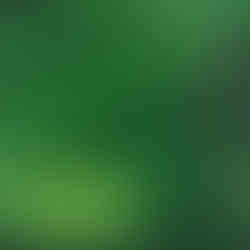Jonas Wood at David Kordansky Gallery
- artandcakela
- Dec 3, 2017
- 3 min read

Jonas Wood. Interiors and Landscapes. Photo Courtesy of David Kordansky Gallery.
Jonas Wood
Interiors and Landscapes
David Kordansky Gallery
By Jody Zellen
Through December 16th
Jonas Wood reduces the observable world into flat planes of color. He creates large-scale paintings that exist in a realm between abstraction and representation, somewhat analogous to artists like Alex Katz and Henri Matisse who often depict exterior and interior spaces that have personal significance or people they know well. Wood excels in depicting empty spaces, often devoid of human beings, yet strangely filled with a human presence.
The paintings in the exhibition, “Interiors and Landscapes” include renderings of boxes in an artist’s studio, a cat on an unmade bed, a kitchen covered with floral patterning, a junk-filled basement, and a back patio covered with hanging plants. These personal and intimate interior spaces are interspersed with similarly quirky landscapes— Las Vegas, an Austrian golf course, a Japanese garden and a cabin in the snow. In each work, Wood creates a layered composition in which three-dimensional (physical) space is creatively transcribed onto the two-dimensional picture plane. It is these uncanny transformations that are unique to Wood’s aesthetic. The perspective is off. Though he carefully collapses and re-organizes numerous planes and angles to simulate a realistic representation, the paintings are in actuality abstractions— patterned and illustrative renderings that flatten space.

Jonas Wood. Interiors and Landscapes. Photo Courtesy of David Kordansky Gallery.
In “Vegas,” (all works 2017) the composition is equally divided. The top half features a cloud-filled sky. The bottom shows a cityscape with an impossible vanishing point. Extending up from the center line is an imposing black triangular shape representing the Luxor Hotel as well as a few smaller rectangles that sign for hotels or office buildings. The scene appears to be painted from a bird’s eye view at a time of day when the color has been drained from the scene. Wood reduces the intensity of color and lushness associated with Las Vegas into a minimal palette of blues and grays. It is as if a color photograph of the city was desaturated, becoming a black and white image that was then abstracted and selectively colorized. The detached nature of “Vegas” stands in opposition to Wood’s portrayal of domestic spaces. In “Helen’s Room” he lovingly paints a smiling cat curled up on a black blanket at the foot of an unmade bed in an art-filled room. As in “Vegas,” the tones are muted and minimal except for a fragment of a yellow, orange and green Matisse-like painting hung on the bedroom wall. The room represents an isolated moment from Wood’s past (a rotary phone on the dresser dates the image) that evokes personal memories with universal appeal. This is also true for the painting “Basement on Pigeon Hill.” Here Wood presents a junk-filled basement. The framing of the painting includes so much information that it looks like it was captured by a wide angle lens. The tightly cropped composition includes a ceiling, wall and floor layered with objects that in reality should recede from foreground to background yet are drawn at the same scale, creating a skewed and impossible perspective. Though abstracted, this basement is presented as a familiar and recognizable space.
Wood thrives on depicting densely packed places. In “Jungle Kitchen,” he covers the green toned walls, cabinets, ceiling and trim with drawings of plants and flowers. Outside the window are ‘real’ plants and in Wood’s recreation, there is unsurprisingly little difference between the ‘real’ and its representation as Wood flattens the space conflating the inside and out by painting both in the same illustrative style.
There is a lot to look at in these paintings. The works are large— in many ways human scale, so that is it easy to imagine stepping into a painting and becoming part of it. This is reinforced by the familiarity of the interior spaces.
The exterior paintings on the other hand are painted from a more distant point of view yet are still densely patterned as each tree, leaf, patch of grass or brick in a wall is represented as an area of flat color. Wood has developed his own quirky yet appealing style of figurative abstraction and succeeds at creating believable representations; some drawn from books and magazines, but most based on personal photographs, memories and acute observation.
#losangeles #losangelesartist #art #painting #onlineartmagazine #losangelesart #contemporaryart #JonasWood #interior #losangelesartgallelry #JodyZellen #artgallery #gallery #cityscape #landscape #artandcake #DavidKordanskyGallery #ArtandCakeLA #fineart #artist #kitchen #arts #artreview #artmagazine #InteriorsandLandscapes #contemporarypainting #ArtandCulture #exhibition #exhibit














































